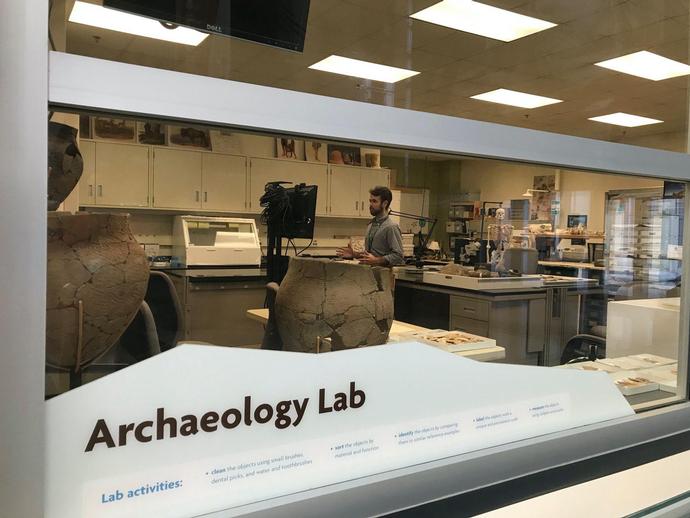October 20, 2020
On Saturday, Assistant Curator of Archaeology Dr. Hayden Bassett provided cultural heritage training to a US Army Reserve unit deploying to East Africa. Dr. Bassett is one of a handful of professionals involved in the revitalization of the Army's "Monuments Men." Popularized by the 2014 movie of the same name, this WWII unit sought to identify and protect fine arts, monuments, historic buildings, artifacts, and archaeological sites from armed conflict in both European and Pacific theaters. This included the creation of detailed maps to avoid damage to important heritage sites, the stabilization of historic buildings, as well as the recovery and restitution of artwork.
Today, the mission of the Monuments Men, now called Army Monuments Officers, has changed to keep up with the collateral and intentional destruction of cultural heritage in modern warfare, and the equally damaging effects of natural disasters. Since late 2019, Dr. Bassett and other archaeologists, curators, art historians, and architectural historians have been assisting the US Army and the Smithsonian in rebuilding this Army unit of heritage professionals, which will advise or deploy in response to threats to cultural heritage in areas of military operation.
As a former archaeologist for the Department of Defense himself, and with time spent engaging in archaeological fieldwork in East Africa, Dr. Bassett was asked to provide training to Army officers deploying to the region. On Saturday, from the Virginia Museum of Natural History in Martinsville, he conducted virtual training for uniformed men and women on how to recognize, avoid, and protect historic sites, monuments, artifacts, and other cultural heritage while deployed to East Africa. Fundamental to his instruction was training to enable Army officers to recognize archaeological sites, modern intangible heritage, and significant cultural practices while on the ground. The goal of the training was simple: do no harm, and uphold the U.S.'s responsibilities to the 1954 Hague Convention, which prohibits the destruction of cultural heritage in armed conflict. Dr. Bassett provided this training alongside Col. Scott DeJesse (US Army Reserve, USACAPOC), Corine Wegener (Smithsonian Cultural Rescue Initiative), and Capt. William Welsh (US Army Reserve, 412 th CA Battalion).
Over the next few years, Dr. Bassett and the Virginia Museum of Natural History will be working closely with the US Army Reserve and the Smithsonian in supporting these efforts to protect cultural heritage from armed conflict and natural disaster. Stay tuned for more to come.

 Hours & Admissions
Hours & Admissions Directions
Directions

